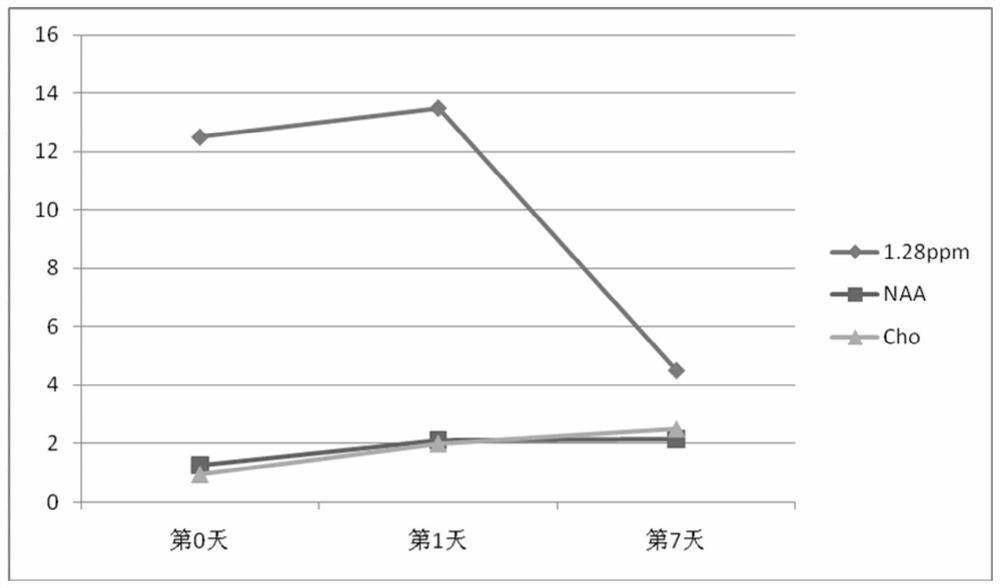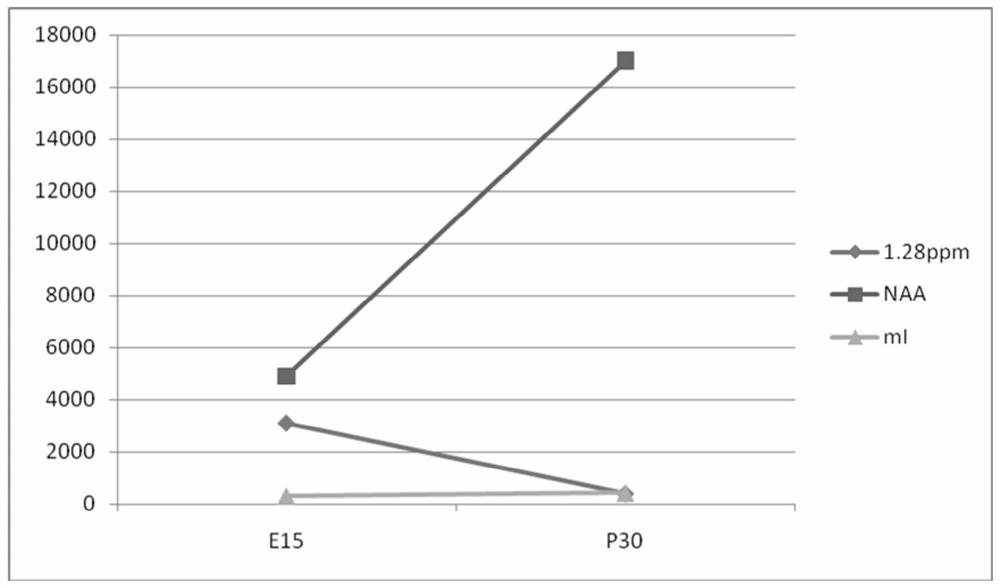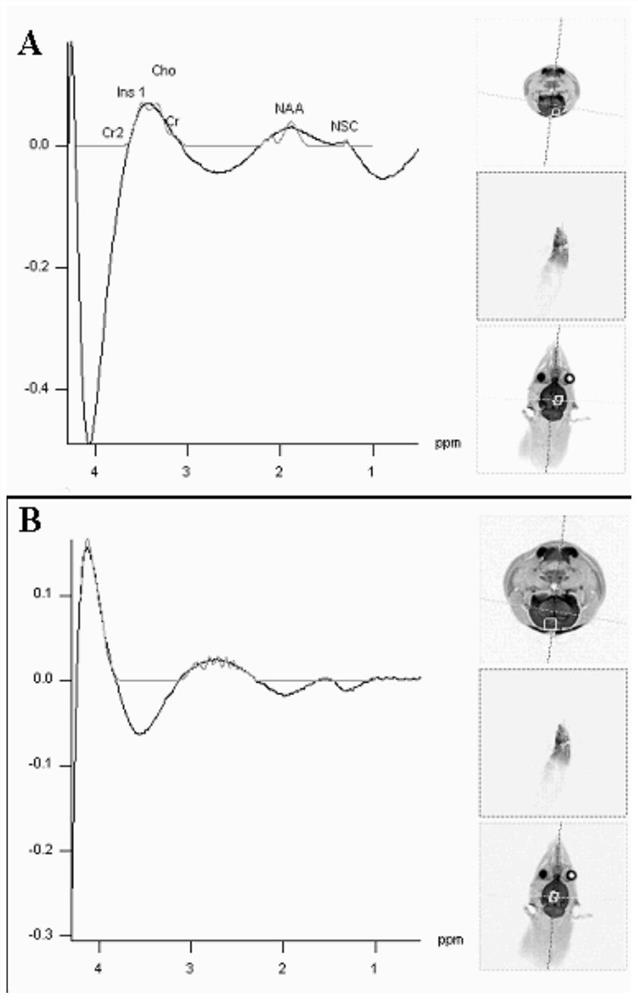Endogenous neural stem cell magnetic resonance noninvasive tracing technology system and establishment method
A technology of neural stem cells and tracing technology, which is applied in the field of magnetic resonance noninvasive tracing technology system and establishment of endogenous neural stem cells in the brain, and can solve the problems that cannot be used to analyze the metabolism of living tissue
- Summary
- Abstract
- Description
- Claims
- Application Information
AI Technical Summary
Problems solved by technology
Method used
Image
Examples
Embodiment 1
[0019] Example 1 Isolation, culture and identification of rat embryo NSCs
[0020] (1) Primary culture of neural stem cells:
[0021] 14-16 day pregnant mice were selected and sacrificed after abdominal anesthesia with 0.32ml / 100g body weight with 10% chloral hydrate. Routine disinfection, laparotomy, fetal mice were taken out, and placed in 4°C PBS solution. After the fetal brain was taken out, the skull and meninges were removed, and the cortex and hippocampus were carefully separated under a dissecting microscope. Sharply cut hippocampus and cortex tissue to 1 mm by mechanical digestion 3 size, transfer to a 10ml cell centrifuge tube, add PBS to 3ml, carefully pipette and let stand for 2 minutes, suck out and collect the supernatant, add the same volume of PBS solution to the centrifuge tube containing the precipitated tissue, pipette again, and so on repeatedly, The tissue volume is gradually reduced until a single cell suspension is formed. Centrifuge at 800 rpm for 5 ...
Embodiment 2
[0037] Example 2 Isolation, cultivation and identification of NSCs in adult brain:
[0038] After debridement of patients with open brain injury, the exposed brain tissue was collected and placed in PBS solution, and washed with PBS repeatedly to remove blood clots and dirt. The pipette was blown to a single-cell suspension, and the cell concentration was adjusted to 5×10 with Neurobasal medium (Gibco) containing 10% FBS, 1% L-glutamine, 1% B27 and 20ng / ml EGF and bFGF. 5 / ml at 37°C, 5% CO 2 Suspension culture was carried out in a cell culture incubator, and fresh culture medium was replaced after 48 hours. Replace half of the culture medium every 3-4 days, and subculture once every 7-10 days. The identification method is the same as above.
Embodiment 3
[0039] Example 3 Stereotaxic transplantation of intracranial NSCs in rats:
[0040] Select the neural stem cell spheres cultured in vitro, trypsinize into a single cell suspension, and transplant 5ul (1X10 5 NSCs) in the right cerebral cortex of rats, the specific method: after the rats were anesthetized by intraperitoneal injection of 10% chloral hydrate (0.32ml / 100g), they were fixed on the KOPF stereotaxic apparatus in a prone position, and the scalp was incised in the middle, and right A 2mmX2mm bone window was formed 2mm laterally and 2mm posteriorly, about 2.5mm vertically from the dura mater, and 5 μL containing about 1×10 5 Rat NSCs suspension, and keep the needle at the injection site for 5 minutes to prevent leakage, and then gradually pull out the injection needle within 3 minutes. After the transplantation, the scalp was sutured, 2000 units of gentamicin were injected intraperitoneally for antibacterial treatment, and the rats were returned to their cages for feed...
PUM
 Login to View More
Login to View More Abstract
Description
Claims
Application Information
 Login to View More
Login to View More - R&D
- Intellectual Property
- Life Sciences
- Materials
- Tech Scout
- Unparalleled Data Quality
- Higher Quality Content
- 60% Fewer Hallucinations
Browse by: Latest US Patents, China's latest patents, Technical Efficacy Thesaurus, Application Domain, Technology Topic, Popular Technical Reports.
© 2025 PatSnap. All rights reserved.Legal|Privacy policy|Modern Slavery Act Transparency Statement|Sitemap|About US| Contact US: help@patsnap.com



